Oak trees are a common sight in many parts of the world and are known for their beauty and longevity. However, during summer, oak tree leaves turning yellow can be a cause for concern. While it is normal for trees to shed leaves during this time, yellowing leaves can also be a sign of a more serious problem.
Understanding why oak tree leaves turn yellow in summer requires identifying the symptoms and possible causes. While pests and fungi can contribute to yellowing leaves, common diseases such as oak wilt and bacterial leaf scorch can also cause the issue.
Additionally, soil quality and watering practices can play a role in maintaining tree health and preventing yellow leaves.
Key Takeaways on Oak Tree Leaves Turning Yellow in Summer
- Oak tree leaves turning yellow in summer can be a sign of a problem.
- Identifying symptoms and possible causes is important in addressing the issue.
- Soil quality and watering practices are important in preventing yellow leaves.
Also see:
Understanding Oak Tree Leaves Turning Yellow in Summer

Oak tree leaves turning yellow in summer is a common phenomenon that can be caused by various factors. It is essential to understand the reasons behind this occurrence to ensure the health and longevity of your oak tree.
Natural Shedding Cycle
One of the primary reasons for oak tree leaves turning yellow in summer is the natural shedding cycle of the tree. As the summer progresses, the tree prepares for the upcoming winter by shedding its older leaves. This process is entirely natural and should not be a cause for concern.
Nutrient Deficiency
Another reason for yellowing oak leaves is a nutrient deficiency. Oak trees require specific nutrients to remain healthy, such as nitrogen, potassium, and iron. If the tree lacks any of these nutrients, the leaves may turn yellow. In such cases, fertilization with the appropriate nutrients can help restore the tree’s health.
Watering Issues
Watering issues can also cause oak tree leaves to turn yellow. Overwatering or underwatering can both lead to yellowing leaves. Overwatering can cause root rot, which can prevent the tree from absorbing sufficient nutrients, leading to yellowing leaves.
On the other hand, underwatering can cause the tree to become dehydrated, leading to yellowing leaves.
Pests and Diseases
Pests and diseases can also cause oak tree leaves to turn yellow. Common pests that affect oak trees include oak leaf blister, oak gall, and oak wilt.
These pests can cause the leaves to turn yellow, and in severe cases, the tree may die. Proper pest control measures can help prevent the spread of these pests and protect the tree’s health.
Environmental Factors
Finally, environmental factors such as extreme temperatures, drought, and pollution can also cause oak tree leaves to turn yellow. These factors can cause the tree to become stressed, leading to yellowing leaves. Proper tree care, including watering, fertilization, and pest control, can help prevent stress and protect the tree’s health.
Identifying Symptoms
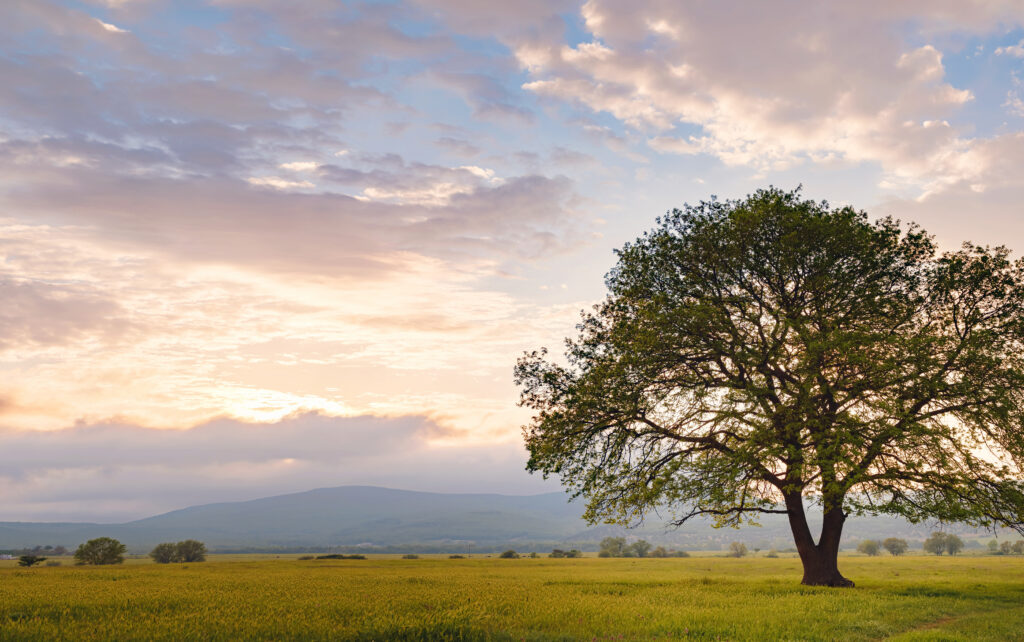
When oak trees start to show signs of distress, it can be difficult to determine the cause. However, there are several symptoms that can help identify the issue. Here are some common symptoms to look for:
Leaf Discoloration
One of the most noticeable symptoms of a problem with an oak tree is yellowing or browning of leaves. If the leaves are turning yellow in summer, it could be a sign of iron chlorosis, which is an iron deficiency that affects oaks. This deficiency can also cause the leaves to become curled.
Foliage Loss
Another symptom of a problem with an oak tree is foliage loss. If the tree is losing its leaves prematurely, it could be due to a lack of water or nutrients. In some cases, the tree may be suffering from oak wilt, which is a fungal disease that can cause rapid defoliation.
Branch Dieback
If the branches of an oak tree are dying back, it could be a sign of a disease or pest infestation. Oak wilt is a common disease that can cause the branches to die back, and it is often accompanied by other symptoms such as leaf discoloration and foliage loss.
Decaying Bark
If the bark of an oak tree is decaying, it could be a sign of a fungal disease or pest infestation. In some cases, the tree may be suffering from oak decline, which is a condition that causes the tree to slowly deteriorate over time.
Rotted Roots
If the roots of an oak tree are rotting, it can cause the tree to become unstable and eventually die. This can be caused by a number of factors, including poor drainage, overwatering, and pest infestations.
Common Diseases Causing Yellow Leaves
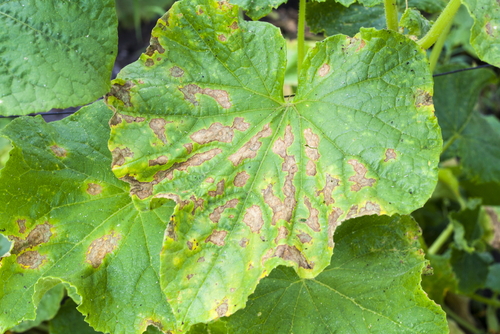
Yellow leaves on oak trees can be a sign of disease. Several diseases can cause the leaves to turn yellow and brown, and eventually fall off. In this section, we will discuss the most common diseases that cause yellow leaves on oak trees.
Oak Wilt
Oak wilt is a fungal disease that affects oak trees. It is caused by the fungus Ceratocystis fagacearum. The disease is spread by beetles that carry the fungus from infected trees to healthy ones.
The fungus blocks the water-conducting vessels in the tree, which causes the leaves to wilt, turn yellow, and eventually fall off. Oak wilt is most common in red oaks, but it can also affect white oaks.
Anthracnose
Anthracnose is a fungal disease that affects many tree species, including oak trees. The disease is caused by several species of fungi in the genus Colletotrichum. The disease causes irregular brown spots on the leaves, which eventually turn yellow and fall off. Anthracnose is most common in wet weather conditions.
Sudden Oak Death
Sudden Oak Death is a disease caused by the water mold Phytophthora ramorum. The disease affects many tree species, including oak trees. The disease causes the leaves to turn yellow and brown, and eventually fall off. The disease is spread by wind, rain, and animals.
Bur Oak Blight
Bur Oak Blight is a fungal disease that affects bur oak trees. The disease is caused by the fungus Tubakia iowensis. The disease causes the leaves to turn yellow and brown, and eventually fall off. The disease is most common in wet weather conditions.
Role of Pests and Fungi
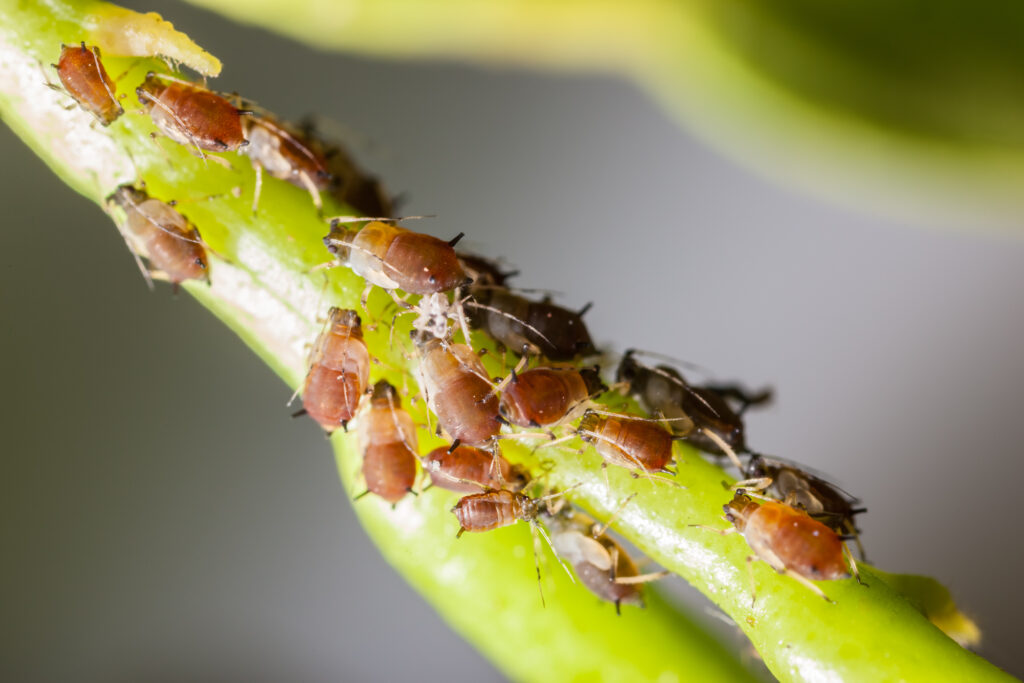
Yellowing of oak tree leaves in summer can be caused by a variety of factors, including pests and fungi. Identifying the cause of the yellowing is essential to treat the tree effectively. Here are some common pests and fungi that can lead to yellowing of oak tree leaves:
Aphids and Scale
Aphids and scale are common pests that can feed on oak tree leaves, leading to yellowing and stunted growth. Aphids are small insects that suck the sap from the leaves, causing them to wilt and turn yellow. Scale is a type of insect that feeds on the sap of the tree, causing yellowing and leaf drop.
To prevent aphids and scale, it is essential to keep the tree healthy by providing adequate water and nutrients. Insecticidal soap and horticultural oil can also be used to control these pests.
Powdery Mildew
Powdery mildew is a fungal disease that can cause yellowing of oak tree leaves. It appears as a white or gray powdery coating on the leaves, and it can spread rapidly in warm and humid conditions.
To prevent powdery mildew, it is essential to keep the tree well-ventilated and to avoid overhead watering. Fungicides can also be used to control the disease.
Fungi
Fungi can cause various diseases in oak trees, leading to yellowing and other symptoms. For example, oak wilt is a fungal disease that can cause yellowing and wilting of the leaves, as well as leaf drop and twig dieback.
To prevent fungal diseases, it is essential to keep the tree healthy and to avoid injuring the bark or roots. Fungicides can also be used to control fungal diseases, but they are most effective when used as a preventive measure.
In conclusion, pests and fungi can play a significant role in causing yellowing of oak tree leaves in summer. Identifying the cause of the yellowing is essential to treat the tree effectively.
By keeping the tree healthy and using appropriate treatments, it is possible to prevent and control pests and fungi and to keep the oak tree healthy and vibrant.
Importance of Soil and Watering

Yellow leaves on oak trees in summer can be caused by various factors, including soil quality and watering practices. This section will discuss the importance of soil and watering in maintaining healthy oak trees.
Soil pH and Nutrient Deficiency
Soil pH and nutrient deficiency can affect the health of oak trees and cause yellowing leaves. Oak trees prefer slightly acidic soil with a pH range of 6.0 to 6.5. If the soil pH is too high or too low, the tree may not be able to absorb the necessary nutrients from the soil, leading to nutrient deficiency and yellowing leaves.
To determine the soil pH and nutrient levels, a soil test can be conducted. Based on the results, the soil can be amended with lime to raise the pH or sulfur to lower it. Fertilizers can also be added to improve nutrient levels.
Watering and Drainage
Watering and drainage are also crucial factors in maintaining healthy oak trees. Oak trees require deep, infrequent watering, rather than frequent shallow watering. Overwatering can lead to root rot, while underwatering can cause drought stress and yellowing leaves.
Proper drainage is also important to prevent waterlogging and root rot. If the soil is heavy and does not drain well, it can be amended with organic matter to improve drainage.
Drought Stress
Drought stress can also cause yellowing leaves on oak trees. During periods of drought, oak trees may not receive enough water to maintain their health, leading to stress and yellowing leaves.
To prevent drought stress, oak trees should be watered deeply and infrequently during dry periods. Mulching around the base of the tree can also help retain soil moisture and prevent water loss through evaporation.
Role of Nutrients and Fertilizer
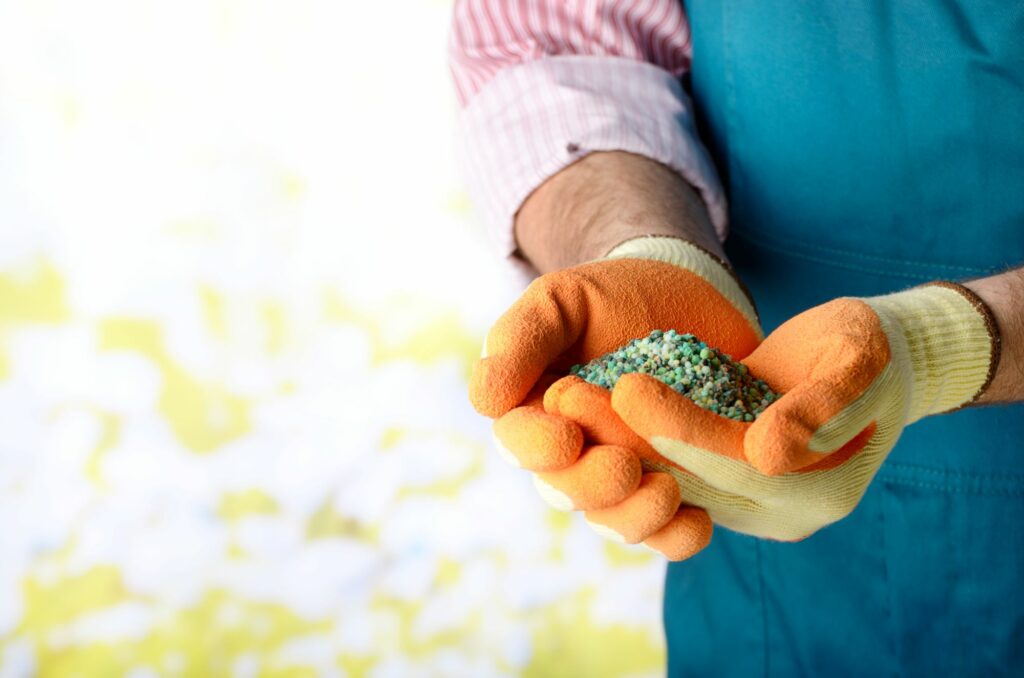
Oak trees require specific nutrients to maintain their health and prevent yellowing leaves. Nutrient deficiencies can cause chlorosis, a condition where the leaves turn yellow due to a lack of chlorophyll. Proper fertilization can help prevent nutrient deficiencies and improve the overall health of the tree.
Iron Deficiency and Chlorosis
Iron is a crucial nutrient for the formation of chlorophyll, which gives leaves their green color. Iron deficiency can cause chlorosis, which is characterized by yellowing leaves with green veins. This condition typically occurs in alkaline soils where iron is less available to the tree’s roots.
To address iron deficiency, it is recommended to use an iron-rich fertilizer or soil amendment. Applying chelated iron to the soil can help improve iron availability to the roots. It is also important to maintain proper soil pH levels, as alkaline soils can inhibit iron uptake.
Nitrogen and Mulch
Nitrogen is another essential nutrient for tree growth and health. Too little nitrogen can cause yellowing leaves and stunted growth. On the other hand, excessive nitrogen can lead to rapid growth and weak branches.
Mulching around the base of the tree can help improve soil quality and nutrient availability. Organic mulch, such as wood chips or leaves, can slowly release nitrogen into the soil as it decomposes. This can help maintain a steady supply of nutrients for the tree.
Fertilizer for Oak Trees
Fertilizing oak trees can help prevent nutrient deficiencies and improve overall tree health. It is important to choose a fertilizer specifically formulated for oak trees, as they have unique nutrient requirements.
When selecting a fertilizer, look for one with a balanced ratio of nitrogen, phosphorus, and potassium. It is also important to consider the micronutrient content, such as iron, manganese, and zinc. These micronutrients are essential for proper tree growth and development.
Prevention and Treatment Strategies
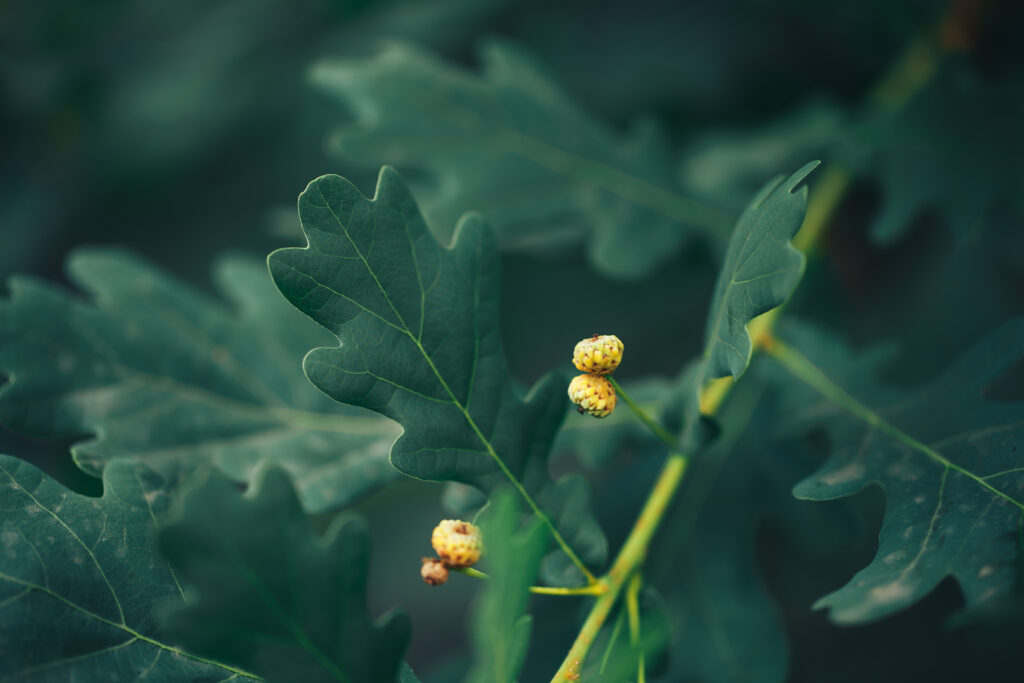
Consultation with an Arborist
When oak tree leaves turn yellow, it can be a sign of stress or wilt caused by a variety of factors, including disease, insect infestation, or inadequate care. If you notice yellowing leaves on your oak tree, it is essential to consult with a certified arborist to diagnose the problem and recommend the best course of action.
Arborists have the expertise and experience to identify the underlying causes of yellowing leaves and provide customized solutions to prevent further damage. They can also advise on proper care and maintenance practices to keep your oak tree healthy and thriving.
Proper Transplant and Care
Transplanting an oak tree can be a stressful event that can cause yellowing leaves. To prevent this, it is essential to follow proper transplanting procedures and provide adequate care afterward. This includes selecting the right location, preparing the soil, and providing sufficient water and nutrients.
Regular pruning and fertilization can also help keep your oak tree healthy and prevent yellowing leaves. It is crucial to avoid over-fertilization, which can lead to excessive growth and make the tree more susceptible to disease and insect infestation.
Use of Fungicides and Herbicides
In some cases, yellowing leaves on oak trees can be caused by fungal or bacterial infections. Using fungicides and herbicides can help prevent and treat these infections. However, it is essential to use these products correctly and follow all safety guidelines to avoid damaging the tree or harming the environment.
When using fungicides and herbicides, it is crucial to select products that are appropriate for your specific situation and follow the recommended application rates and schedules. It is also essential to monitor the tree for any signs of improvement or further damage and adjust your treatment plan accordingly.
Frequently Asked Questions
Why are the leaves on my oak tree turning yellow in the summer?
Yellowing leaves on oak trees in the summer can be a sign of stress caused by various factors. It’s essential to identify the cause of the problem to determine the best course of action.
What causes oak tree leaves to turn yellow?
There are several reasons why oak tree leaves turn yellow, including drought stress, nutrient deficiency, soil compaction, and pest infestations. Identifying the cause is crucial to determine the appropriate treatment.
How can I prevent my oak tree leaves from turning yellow?
Proper tree care, including regular watering, fertilization, and mulching, can help prevent oak tree leaves from turning yellow. Regular inspections for pests and diseases can also help catch any problems early on.
What are the signs of a sick oak tree?
Signs of a sick oak tree may include yellowing leaves, premature leaf drop, stunted growth, and dead or dying branches. It’s crucial to address any problems early on to prevent further damage.
Is it normal for oak tree leaves to turn yellow in the summer?
It’s normal for oak tree leaves to turn yellow and drop in the fall, but yellowing leaves in the summer can be a sign of stress or disease.
What can I do to help my oak tree if its leaves are turning yellow?
If your oak tree’s leaves are turning yellow, it’s essential to identify the cause and address the issue promptly. Consulting with a certified arborist can help determine the best course of action for your tree.

Hey, I’m Lisa and I’ve been an avid gardener for over 30 years. I love writing, talking and living in the garden! Feel free to connect with me on my socials below


